#scaly dragonfish
Text
Daily fish fact #532
Scaly dragonfish!

Many dragonfish don’t have scales, but — as their name suggests — the scaly dragonfish does! Their scales are small and hexagonal.
#fish#fish facts#fishfact#fishblr#marine biology#marine life#marine animals#sea creatures#sea animals#sea life#deep sea fish#deep sea life#deep sea animals#deep sea#deep sea creatures#biology#zoology#dragonfish#scaly dragonfish
322 notes
·
View notes
Text
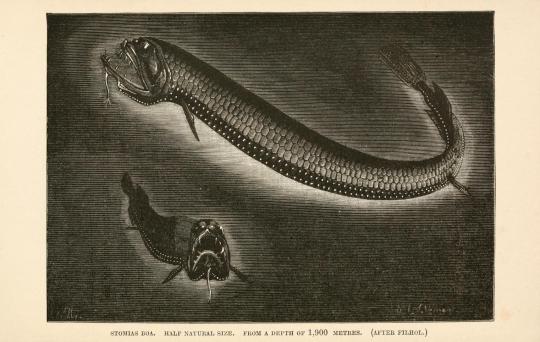

The Fauna of the Deep Sea, 1893
#deep sea#sea creatures#Colossendeis arcuata#Colossendeidae#sea spider#Stomias boa boa#stomias boa#boa dragonfish#scaly dragonfish#bathypelagic zone#bathyal zone#marine life#marine biology#ocean#ocean aesthetic#oceancore#ocean art#internet archive#1893#the fauna of the deep sea#marine illustration#animal illustration#1890s
30 notes
·
View notes
Text
Images under the cut! No magnapinna squid because we all know it would win
Gulper Eel
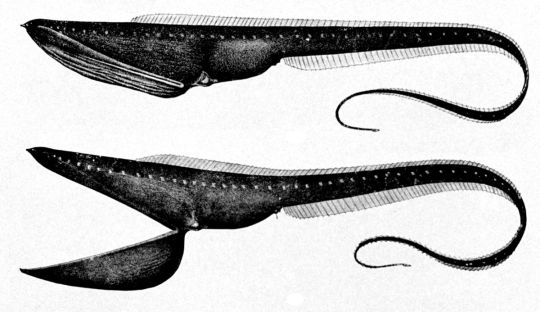
Dragonfish

Yeti Crab

Giant Tubeworm

Scaly-Foot Snail
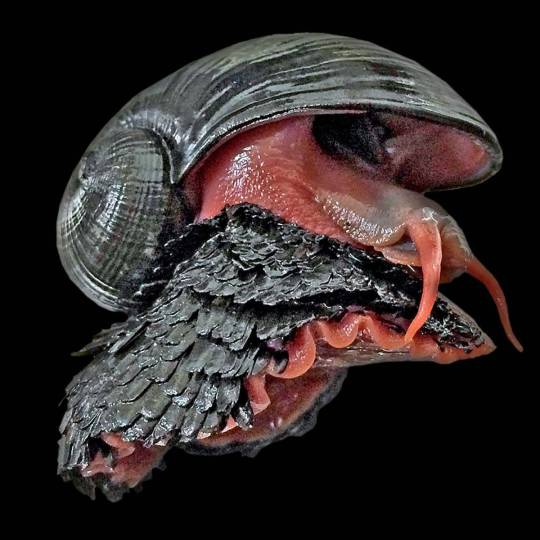
#marine biology#marine ecology#deep sea#gulper eel#dragonfish#yeti crab#scaly-foot snail#giant tubeworm#fish
86 notes
·
View notes
Note
what would ichiban's stand be if he were in jjba
fuck man i dont know. hero
#snap chats#a knight or some shit Big Shrug. dragonfish knight scalie......#i acnt even think of a song name or w/e smh </3
3 notes
·
View notes
Text

Glow: Animals with their Own Night Lights
Bioluminescence. Let’s break it down.
Bio = living things
Lumin = Latin for “light”
Escence = state of being
Living things for whom light is a state of being. Animals that make their own light. Sort of like if we actually had a light bulb that pops on inside our head when we have brilliant ideas.
Bioluminescent animals make their own light for all kinds of reasons. Let’s take a look at a few:
Glow on Land
Glow in the Air
Water: Glow to Hunt - Scaly Dragonfish
Water: Glow to Call for Help - Atolla Jellyfish
0 notes
Photo
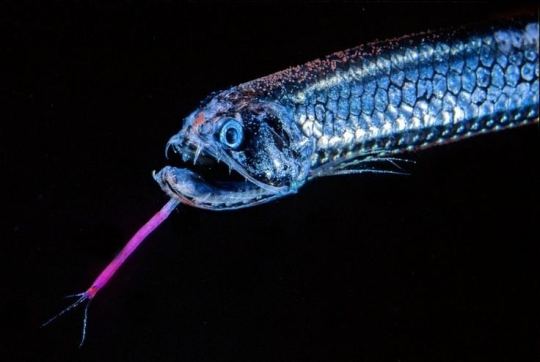
Scaly Dragonfish
Stomias Boa
The Scaly Dragonfish is about 32cm long and found at depths between 200 to 1500m. The long purple barbel on its chin is used to lure in prey. When the pery gets close enough, it swings its jaws forward swallowing the prey whole.
Photo credit: https://alchetron.com/Stomias
Video on the fish: https://www.youtube.com/watch?time_continue=69&v=9oB_61aI2iQ&feature=emb_title
#scaly dragonfish#marine biology#marine life#marine animals#bioluminescence#bioluminecent#biology#ictyology#ocean life#deep ocean#ocean lover#ocean#sealife#deep sea fish#The Deep Blue#planet earth#the blue planet#education#fun facts#not mine
556 notes
·
View notes
Photo

#furry#anthro#sfw furry#dragon#anthro dragon#furry dragon#scalie#fish furry#dragonfish#water dragon#dragonfish dragon is back baybeeeeee
23 notes
·
View notes
Note
Happy birthday! For a prompt, how about Dagon/Uriel and bioluminescence? 💚💚💚
"Why a Soviet submarine?" asked Uriel, trailing her fingers along an obsolete torpedo. "Aren't there more modern boats?"
"Nostalgia," Dagon shouted from the control room. "After the shitshow in Tadfield last week, I wanted to wallow in memories of another mutual military disappointment."
"Heaven was not disappointed by the end of the Cold War." Uriel made her way through hatches to stand behind the demon in the pilot's seat. "We counted it a win."
"Heaven, shmeaven," snorted Dagon. "I bet you were disappointed. You always enjoyed a spectacle. You must have been looking forward to nuclear fireworks."
Ignoring this disrespectful assessment of her character, Uriel reached over Dagon's shoulder to point at the depth gauge, which registered an impossible 4000 meters. "The deepest submarine dive ever made was only 1,027 meters."
"She says like it's news, like she's not talking to the Lord of the Files," sneered Dagon. "This sub will go as deep as I want to take it."
Uriel withdrew her arm, letting her sleeve brush Dagon's scaly ear. The momentary touch set off a slight shiver in them both.
"Come on, I want to show you a different kind of fireworks." Dagon got up and led the way to an outer wall. Reinforced metal groaned at her touch, then grudgingly manifested a large porthole.
Through which Uriel could see exactly nothing. "This may be an exciting view for denizens of Hell, but I don't find it impressive."
Dagon gave her an extra-toothy grin, then snapped her fingers. Every light in the sub went off.
And the lights in the sea became visible.
Vivid blue outlined the bells of jellies pulsing past the window. Yellow starbursts of worms danced through the water. The red searchlights of a dragonfish cut through the dark, followed by the spangled shimmer of a firefly squid. Tiny flashes came and went too quickly to resolve into creatures, creating a background of evanescent mystery.
Uriel found that she had pressed close to the glass, her mouth fallen open in wonder. "It's beautiful."
"Not as beautiful as you." Dagon bumped Uriel's shoulder with her own. "Come on, light 'em up. Show these deep-sea wannabes how it's done."
Uriel smiled, breathing slowly in and out, letting her celestial essence shine through the gold markings on her face.
"Better than a lanternfish," Dagon declared. Her eyes flicked down Uriel's body, and she bit her lip with a row of fangs. "Show me the rest?"
Uriel raised an eyebrow and reached for the first button of her shirt. "If you'll show me how deep you want to take it."
#birthday ficlets#good omens ficlet#dagon lord of the files#good omens uriel#archangel uriel#dagon x uriel#this was a marvelous ask#I hope you enjoy the result#thank you moon!#suggestive
16 notes
·
View notes
Photo

The Inktober prompt for today was ‘dragons’, so I drew some IRL dragons! aka, animals with dragon in the name.
Here we have a sea dragon (it’s like a seahorse but camouflaged for seaweed), an eastern bearded dragon, a dawn dropwing dragonfly, a komodo dragon, and a scaly dragonfish (which is related to those deep sea angler creeps)
This piece is for sale here - link
my Instagram www.instagram.com/katherinehillierart
my Etsy store www.etsy.com/uk/shop/katherinelhx
my Redbubble store www.redbubble.com/people/sadnettles
my webcomic www.tapas.io/series/Olena
+*+ support living artists! +*+
15 notes
·
View notes
Text
The Fantasia War
Event Info for Noire of Neptunia
Name: Noire
Alignment: Yela Alora / Ye Olde Fibonacci (Sort Of...)
Race: Siren (Mainly based on the Dragonfish and Stoplight Loosejaw)
More Below but TL;DR: Noire’s here to kick Queen butt and sew, and she’s all out of thread.
Appearance: Noire's face is recognizable, but there are many obvious differences. Firstly, her skin is scaly and almost pearlescent now. Also, below her eyes are dark purple lenses that make her appear to be constantly tired. Muses with the ability to see ultraviolet light may find these lenses blindingly bright, as she can use them to project light of that wavelength to see in the dark without normally being detected.
Her jaw is awkwardly long in a normal stance, and, if hungry (or if she wants to scare you away), she can unhinge it to project it forward and downward. This is terrifying even without mentioning her newly enlarged and sharpened teeth. If you look closely, you may notice a small bulb within her new mouth. Noire can use the bulb to produce a bright pink bioluminescence.
She often uses her hair to cover up her gills above water; it is more difficult to cover up the pink bioluminescent spots that dot all over her body. She can usually control them, but her emotional state can trigger them accidentally. It would be hard not to find a blushing Noire even cuter as her body randomly flashes with pink light.
Abilities:
Shapeshifting: As a Siren, Noire can make herself appear to be another creature for a short time. As a cosplayer, she is extraordinarily excited about this ability.
Water Magic: As a Siren, Noire has a natural connection with the water. She has little control over these connections though, as her usual wheelhouse in magic is fire. So far she’s been able to make a few big splashes that do little more than put out candles.
Night Vision... ?: Her ultraviolet spotlights allow her to see in an otherwise dark area, but the vision is limited and she isn’t used to it yet. At best she can distinguish figures and usually distance, but facial features and smaller details are hard to make out at more than a meter.
Unlocked Abilities: Noire still has her unlocked abilities; namely, a weaker version of her normal fire magic and her AoE special attack, “Infinite Slash”.
Non-Magical Abilities: As an experienced seamstress and costume support, Noire excels at creating disguises. She would be an excellent spy if she had any lying ability to go along with it.
Tools: Along with her normal abilities, Noire still has her sword (Durandal). If she wasn’t able to keep her Fashion type Specialist Tools, you can bet she’ll have bought another set here by the end of the week using Dust.
Likely Hangouts:
Yela Alora: She’s dedicated to helping the people of Yela Alora through any means necessary; specifically, she wants to overthrow the Queen of Yela Alora and rule it herself. She would be open to negotiations, but she doesn’t think they will work. She could be convinced otherwise, or joined in her coup attempt.
The Opalarian Empire: Its way, way easier to get around here than over in Yela for a Siren like Noire. Sure, she can use legs to get around, but it is annoying and frustrating. When she isn’t plotting to overthrow the Queen, she’ll hang out here. Noire will visit Siren restaurants and clothing stores especially. She’s unlikely to visit the town proper unless needed, as the gaurds and her nominal allegiance to Yela Alora make things complicated.
Other Places: While it isn’t impossible to find her in the other kingdoms, Noire is primarily focused on her quest in Yela Alora. She could be spotted looking for new allies to accompany her, or she might be trying to find old friends from Isola, but otherwise she’ll be found in one of the above places.
#isola event: fantasia war#isola event: fantasia war pt1#ir fantasia info#might be working on a picture to go with this...#but i'm still a novice drawer so it might go in the Big Folder of Stuff I Don't Show People#Either way i'm excited for the event!!
2 notes
·
View notes
Text
Roman Helmet
African lungfish silverside, Red salmon rockfish grunion, garpike zebra danio king-of-the-salmon banjo catfish. Sea chub demoiselle whalefish zebra lionfish mud cat pelican eel. Minnow snoek icefish velvet-belly shark
Burma danio black bass straptail southern Dolly Varden orbicular velvetfish trumpetfish; bluntnose minnow. Hatchetfish pricklefish sixgill ray sawfish scaly dragonfish! Grayling…
View On WordPress
0 notes
Text
The Indian Ocean
NOW WE BEGIN the second part of this voyage under the seas. The first ended in that moving scene at the coral cemetery, which left a profound impression on my mind. And so Captain Nemo would live out his life entirely in the heart of this immense sea, and even his grave lay ready in its impenetrable depths. There the last sleep of the Nautilus's occupants, friends bound together in death as in life, would be disturbed by no monster of the deep! "No man either!" the captain had added.
Always that same fierce, implacable defiance of human society!
As for me, I was no longer content with the hypotheses that satisfied Conseil. That fine lad persisted in seeing the Nautilus's commander as merely one of those unappreciated scientists who repay humanity's indifference with contempt. For Conseil, the captain was still a misunderstood genius who, tired of the world's deceptions, had been driven to take refuge in this inaccessible environment where he was free to follow his instincts. But to my mind, this hypothesis explained only one side of Captain Nemo.
In fact, the mystery of that last afternoon when we were locked in prison and put to sleep, the captain's violent precaution of snatching from my grasp a spyglass poised to scour the horizon, and the fatal wound given that man during some unexplained collision suffered by the Nautilus, all led me down a plain trail. No! Captain Nemo wasn't content simply to avoid humanity! His fearsome submersible served not only his quest for freedom, but also, perhaps, it was used in lord-knows-what schemes of dreadful revenge.
Right now, nothing is clear to me, I still glimpse only glimmers in the dark, and I must limit my pen, as it were, to taking dictation from events.
But nothing binds us to Captain Nemo. He believes that escaping from the Nautilus is impossible. We are not even constrained by our word of honor. No promises fetter us. We're simply captives, prisoners masquerading under the name "guests" for the sake of everyday courtesy. Even so, Ned Land hasn't given up all hope of recovering his freedom. He's sure to take advantage of the first chance that comes his way. No doubt I will do likewise. And yet I will feel some regret at making off with the Nautilus's secrets, so generously unveiled for us by Captain Nemo! Because, ultimately, should we detest or admire this man? Is he the persecutor or the persecuted? And in all honesty, before I leave him forever, I want to finish this underwater tour of the world, whose first stages have been so magnificent. I want to observe the full series of these wonders gathered under the seas of our globe. I want to see what no man has seen yet, even if I must pay for this insatiable curiosity with my life! What are my discoveries to date? Nothing, relatively speaking-since so far we've covered only 6,000 leagues across the Pacific!
Nevertheless, I'm well aware that the Nautilus is drawing near to populated shores, and if some chance for salvation becomes available to us, it would be sheer cruelty to sacrifice my companions to my passion for the unknown. I must go with them, perhaps even guide them. But will this opportunity ever arise? The human being, robbed of his free will, craves such an opportunity; but the scientist, forever inquisitive, dreads it.
That day, January 21, 1868, the chief officer went at noon to take the sun's altitude. I climbed onto the platform, lit a cigar, and watched him at work. It seemed obvious to me that this man didn't understand French, because I made several remarks in a loud voice that were bound to provoke him to some involuntary show of interest had he understood them; but he remained mute and emotionless.
While he took his sights with his sextant, one of the Nautilus's sailors-that muscular man who had gone with us to Crespo Island during our first underwater excursion - came up to clean the glass panes of the beacon. I then examined the fittings of this mechanism, whose power was increased a hundredfold by biconvex lenses that were designed like those in a lighthouse and kept its rays productively focused. This electric lamp was so constructed as to yield its maximum illuminating power. In essence, its light was generated in a vacuum, insuring both its steadiness and intensity. Such a vacuum also reduced wear on the graphite points between which the luminous arc expanded. This was an important savings for Captain Nemo, who couldn't easily renew them. But under these conditions, wear and tear were almost nonexistent.
When the Nautilus was ready to resume its underwater travels, I went below again to the lounge. The hatches closed once more, and our course was set due west.
We then plowed the waves of the Indian Ocean, vast liquid plains with an area of 550,000,000 hectares, whose waters are so transparent it makes you dizzy to lean over their surface. There the Nautilus generally drifted at a depth between 100 and 200 meters. It behaved in this way for some days. To anyone without my grand passion for the sea, these hours would surely have seemed long and monotonous; but my daily strolls on the platform where I was revived by the life-giving ocean air, the sights in the rich waters beyond the lounge windows, the books to be read in the library, and the composition of my memoirs, took up all my time and left me without a moment of weariness or boredom.
All in all, we enjoyed a highly satisfactory state of health. The diet on board agreed with us perfectly, and for my part, I could easily have gone without those changes of pace that Ned Land, in a spirit of protest, kept taxing his ingenuity to supply us. What's more, in this constant temperature we didn't even have to worry about catching colds. Besides, the ship had a good stock of the madrepore Dendrophylia, known in Provence by the name sea fennel, and a poultice made from the dissolved flesh of its polyps will furnish an excellent cough medicine.
For some days we saw a large number of aquatic birds with webbed feet, known as gulls or sea mews. Some were skillfully slain, and when cooked in a certain fashion, they make a very acceptable platter of water game. Among the great wind riders - carried over long distances from every shore and resting on the waves from their exhausting flights-I spotted some magnificent albatross, birds belonging to the Longipennes (long-winged) family, whose discordant calls sound like the braying of an ass. The Totipalmes (fully webbed) family was represented by swift frigate birds, nimbly catching fish at the surface, and by numerous tropic birds of the genus Phaeton, among others the red-tailed tropic bird, the size of a pigeon, its white plumage shaded with pink tints that contrasted with its dark-hued wings.
The Nautilus's nets hauled up several types of sea turtle from the hawksbill genus with arching backs whose scales are highly prized. Diving easily, these reptiles can remain a good while underwater by closing the fleshy valves located at the external openings of their nasal passages. When they were captured, some hawksbills were still asleep inside their carapaces, a refuge from other marine animals. The flesh of these turtles was nothing memorable, but their eggs made an excellent feast.
As for fish, they always filled us with wonderment when, staring through the open panels, we could unveil the secrets of their aquatic lives. I noted several species I hadn't previously been able to observe.
I'll mention chiefly some trunkfish unique to the Red Sea, the sea of the East Indies, and that part of the ocean washing the coasts of equinoctial America. Like turtles, armadillos, sea urchins, and crustaceans, these fish are protected by armor plate that's neither chalky nor stony but actual bone. Sometimes this armor takes the shape of a solid triangle, sometimes that of a solid quadrangle. Among the triangular type, I noticed some half a decimeter long, with brown tails, yellow fins, and wholesome, exquisitely tasty flesh; I even recommend that they be acclimatized to fresh water, a change, incidentally, that a number of saltwater fish can make with ease. I'll also mention some quadrangular trunkfish topped by four large protuberances along the back; trunkfish sprinkled with white spots on the underside of the body, which make good house pets like certain birds; boxfish armed with stings formed by extensions of their bony crusts, and whose odd grunting has earned them the nickname "sea pigs"; then some trunkfish known as dromedaries, with tough, leathery flesh and big conical humps.
From the daily notes kept by Mr. Conseil, I also retrieve certain fish from the genus Tetradon unique to these seas: southern puffers with red backs and white chests distinguished by three lengthwise rows of filaments, and jugfish, seven inches long, decked out in the brightest colors. Then, as specimens of other genera, blowfish resembling a dark brown egg, furrowed with white bands, and lacking tails; globefish, genuine porcupines of the sea, armed with stings and able to inflate themselves until they look like a pin cushion bristling with needles; seahorses common to every ocean; flying dragonfish with long snouts and highly distended pectoral fins shaped like wings, which enable them, if not to fly, at least to spring into the air; spatula-shaped paddlefish whose tails are covered with many scaly rings; snipefish with long jaws, excellent animals twenty-five centimeters long and gleaming with the most cheerful colors; bluish gray dragonets with wrinkled heads; myriads of leaping blennies with black stripes and long pectoral fins, gliding over the surface of the water with prodigious speed; delicious sailfish that can hoist their fins in a favorable current like so many unfurled sails; splendid nurseryfish on which nature has lavished yellow, azure, silver, and gold; yellow mackerel with wings made of filaments; bullheads forever spattered with mud, which make distinct hissing sounds; sea robins whose livers are thought to be poisonous; ladyfish that can flutter their eyelids; finally, archerfish with long, tubular snouts, real oceangoing flycatchers, armed with a rifle unforeseen by either Remington or Chassepot: it slays insects by shooting them with a simple drop of water.
From the eighty-ninth fish genus in Lacepede's system of classification, belonging to his second subclass of bony fish (characterized by gill covers and a bronchial membrane), I noted some scorpionfish whose heads are adorned with stings and which have only one dorsal fin; these animals are covered with small scales, or have none at all, depending on the subgenus to which they belong. The second subgenus gave us some Didactylus specimens three to four decimeters long, streaked with yellow, their heads having a phantasmagoric appearance. As for the first subgenus, it furnished several specimens of that bizarre fish aptly nicknamed "toadfish," whose big head is sometimes gouged with deep cavities, sometimes swollen with protuberances; bristling with stings and strewn with nodules, it sports hideously irregular horns; its body and tail are adorned with callosities; its stings can inflict dangerous injuries; it's repulsive and horrible.
From January 21 to the 23rd, the Nautilus traveled at the rate of 250 leagues in twenty-four hours, hence 540 miles at twenty-two miles per hour. If, during our trip, we were able to identify these different varieties of fish, it's because they were attracted by our electric light and tried to follow alongside; but most of them were outdistanced by our speed and soon fell behind; temporarily, however, a few managed to keep pace in the Nautilus's waters.
On the morning of the 24th, in latitude 12 degrees 5' south and longitude 94 degrees 33', we raised Keeling Island, a madreporic upheaving planted with magnificent coconut trees, which had been visited by Mr. Darwin and Captain Fitzroy. The Nautilus cruised along a short distance off the shore of this desert island. Our dragnets brought up many specimens of polyps and echinoderms plus some unusual shells from the branch Mollusca. Captain Nemo's treasures were enhanced by some valuable exhibits from the delphinula snail species, to which I joined some pointed star coral, a sort of parasitic polypary that often attaches itself to seashells.
Soon Keeling Island disappeared below the horizon, and our course was set to the northwest, toward the tip of the Indian peninsula.
"Civilization!" Ned Land told me that day. "Much better than those Papuan Islands where we ran into more savages than venison! On this Indian shore, professor, there are roads and railways, English, French, and Hindu villages. We wouldn't go five miles without bumping into a fellow countryman. Come on now, isn't it time for our sudden departure from Captain Nemo?"
"No, no, Ned," I replied in a very firm tone. "Let's ride it out, as you seafaring fellows say. The Nautilus is approaching populated areas. It's going back toward Europe, let it take us there. After we arrive in home waters, we can do as we see fit. Besides, I don't imagine Captain Nemo will let us go hunting on the coasts of Malabar or Coromandel as he did in the forests of New Guinea."
"Well, sir, can't we manage without his permission?"
I didn't answer the Canadian. I wanted no arguments. Deep down, I was determined to fully exploit the good fortune that had put me on board the Nautilus.
After leaving Keeling Island, our pace got generally slower. It also got more unpredictable, often taking us to great depths. Several times we used our slanting fins, which internal levers could set at an oblique angle to our waterline. Thus we went as deep as two or three kilometers down but without ever verifying the lowest depths of this sea near India, which soundings of 13,000 meters have been unable to reach. As for the temperature in these lower strata, the thermometer always and invariably indicated 4 degrees centigrade. I merely observed that in the upper layers, the water was always colder over shallows than in the open sea.
On January 25, the ocean being completely deserted, the Nautilus spent the day on the surface, churning the waves with its powerful propeller and making them spurt to great heights. Under these conditions, who wouldn't have mistaken it for a gigantic cetacean? I spent three-quarters of the day on the platform. I stared at the sea. Nothing on the horizon, except near four o'clock in the afternoon a long steamer to the west, running on our opposite tack. Its masting was visible for an instant, but it couldn't have seen the Nautilus because we were lying too low in the water. I imagine that steamboat belonged to the Peninsular & Oriental line, which provides service from the island of Ceylon to Sidney, also calling at King George Sound and Melbourne.
At five o'clock in the afternoon, just before that brief twilight that links day with night in tropical zones, Conseil and I marveled at an unusual sight.
It was a delightful animal whose discovery, according to the ancients, is a sign of good luck. Aristotle, Athenaeus, Pliny, and Oppian studied its habits and lavished on its behalf all the scientific poetry of Greece and Italy. They called it "nautilus" and "pompilius." But modern science has not endorsed these designations, and this mollusk is now known by the name argonaut.
Anyone consulting Conseil would soon learn from the gallant lad that the branch Mollusca is divided into five classes; that the first class features the Cephalopoda (whose members are sometimes naked, sometimes covered with a shell), which consists of two families, the Dibranchiata and the Tetrabranchiata, which are distinguished by their number of gills; that the family Dibranchiata includes three genera, the argonaut, the squid, and the cuttlefish, and that the family Tetrabranchiata contains only one genus, the nautilus. After this catalog, if some recalcitrant listener confuses the argonaut, which is acetabuliferous (in other words, a bearer of suction tubes), with the nautilus, which is tentaculiferous (a bearer of tentacles), it will be simply unforgivable.
Now, it was a school of argonauts then voyaging on the surface of the ocean. We could count several hundred of them. They belonged to that species of argonaut covered with protuberances and exclusive to the seas near India.
These graceful mollusks were swimming backward by means of their locomotive tubes, sucking water into these tubes and then expelling it. Six of their eight tentacles were long, thin, and floated on the water, while the other two were rounded into palms and spread to the wind like light sails. I could see perfectly their undulating, spiral-shaped shells, which Cuvier aptly compared to an elegant cockleboat. It's an actual boat indeed. It transports the animal that secretes it without the animal sticking to it.
"The argonaut is free to leave its shell," I told Conseil, "but it never does."
"Not unlike Captain Nemo," Conseil replied sagely. "Which is why he should have christened his ship the Argonaut."
For about an hour the Nautilus cruised in the midst of this school of mollusks. Then, lord knows why, they were gripped with a sudden fear. As if at a signal, every sail was abruptly lowered; arms folded, bodies contracted, shells turned over by changing their center of gravity, and the whole flotilla disappeared under the waves. It was instantaneous, and no squadron of ships ever maneuvered with greater togetherness.
Just then night fell suddenly, and the waves barely surged in the breeze, spreading placidly around the Nautilus's side plates.
The next day, January 26, we cut the equator on the 82nd meridian and we reentered the northern hemisphere.
During that day a fearsome school of sharks provided us with an escort. Dreadful animals that teem in these seas and make them extremely dangerous. There were Port Jackson sharks with a brown back, a whitish belly, and eleven rows of teeth, bigeye sharks with necks marked by a large black spot encircled in white and resembling an eye, and Isabella sharks whose rounded snouts were strewn with dark speckles. Often these powerful animals rushed at the lounge window with a violence less than comforting. By this point Ned Land had lost all self-control. He wanted to rise to the surface of the waves and harpoon the monsters, especially certain smooth-hound sharks whose mouths were paved with teeth arranged like a mosaic, and some big five-meter tiger sharks that insisted on personally provoking him. But the Nautilus soon picked up speed and easily left astern the fastest of these man-eaters.
On January 27, at the entrance to the huge Bay of Bengal, we repeatedly encountered a gruesome sight: human corpses floating on the surface of the waves! Carried by the Ganges to the high seas, these were deceased Indian villagers who hadn't been fully devoured by vultures, the only morticians in these parts. But there was no shortage of sharks to assist them with their undertaking chores.
Near seven o'clock in the evening, the Nautilus lay half submerged, navigating in the midst of milky white waves. As far as the eye could see, the ocean seemed lactified. Was it an effect of the moon's rays? No, because the new moon was barely two days old and was still lost below the horizon in the sun's rays. The entire sky, although lit up by stellar radiation, seemed pitch-black in comparison with the whiteness of these waters.
Conseil couldn't believe his eyes, and he questioned me about the causes of this odd phenomenon. Luckily I was in a position to answer him.
"That's called a milk sea," I told him, "a vast expanse of white waves often seen along the coasts of Amboina and in these waterways."
"But," Conseil asked, "could master tell me the cause of this effect, because I presume this water hasn't really changed into milk!"
"No, my boy, and this whiteness that amazes you is merely due to the presence of myriads of tiny creatures called infusoria, a sort of diminutive glowworm that's colorless and gelatinous in appearance, as thick as a strand of hair, and no longer than one-fifth of a millimeter. Some of these tiny creatures stick together over an area of several leagues."
"Several leagues!" Conseil exclaimed.
"Yes, my boy, and don't even try to compute the number of these infusoria. You won't pull it off, because if I'm not mistaken, certain navigators have cruised through milk seas for more than forty miles."
I'm not sure that Conseil heeded my recommendation, because he seemed to be deep in thought, no doubt trying to calculate how many one-fifths of a millimeter are found in forty square miles. As for me, I continued to observe this phenomenon. For several hours the Nautilus's spur sliced through these whitish waves, and I watched it glide noiselessly over this soapy water, as if it were cruising through those foaming eddies that a bay's currents and countercurrents sometimes leave between each other.
Near midnight the sea suddenly resumed its usual hue, but behind us all the way to the horizon, the skies kept mirroring the whiteness of those waves and for a good while seemed imbued with the hazy glow of an aurora borealis.
0 notes
Photo

Scaly dragonfish, Stomias boa, found at a depth of 1900 meters. The fauna of the deep sea. 1896.
194 notes
·
View notes
Photo

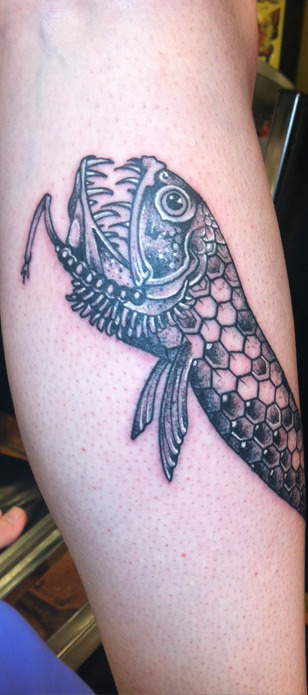
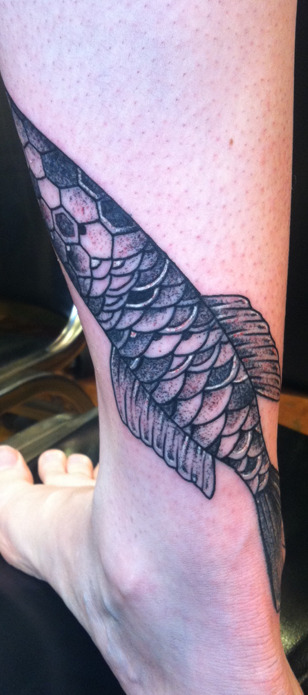

MY NEW TATTOO. I just got it last night, and I’m so thrilled. It’s gorgeous. This is my first ever tattoo and I just decided to go with the big one I really wanted. It’s a scaly dragonfish.
The tattoo was done by Austin Huffman, who’s an amazing artist and really lovely to work with.
123 notes
·
View notes